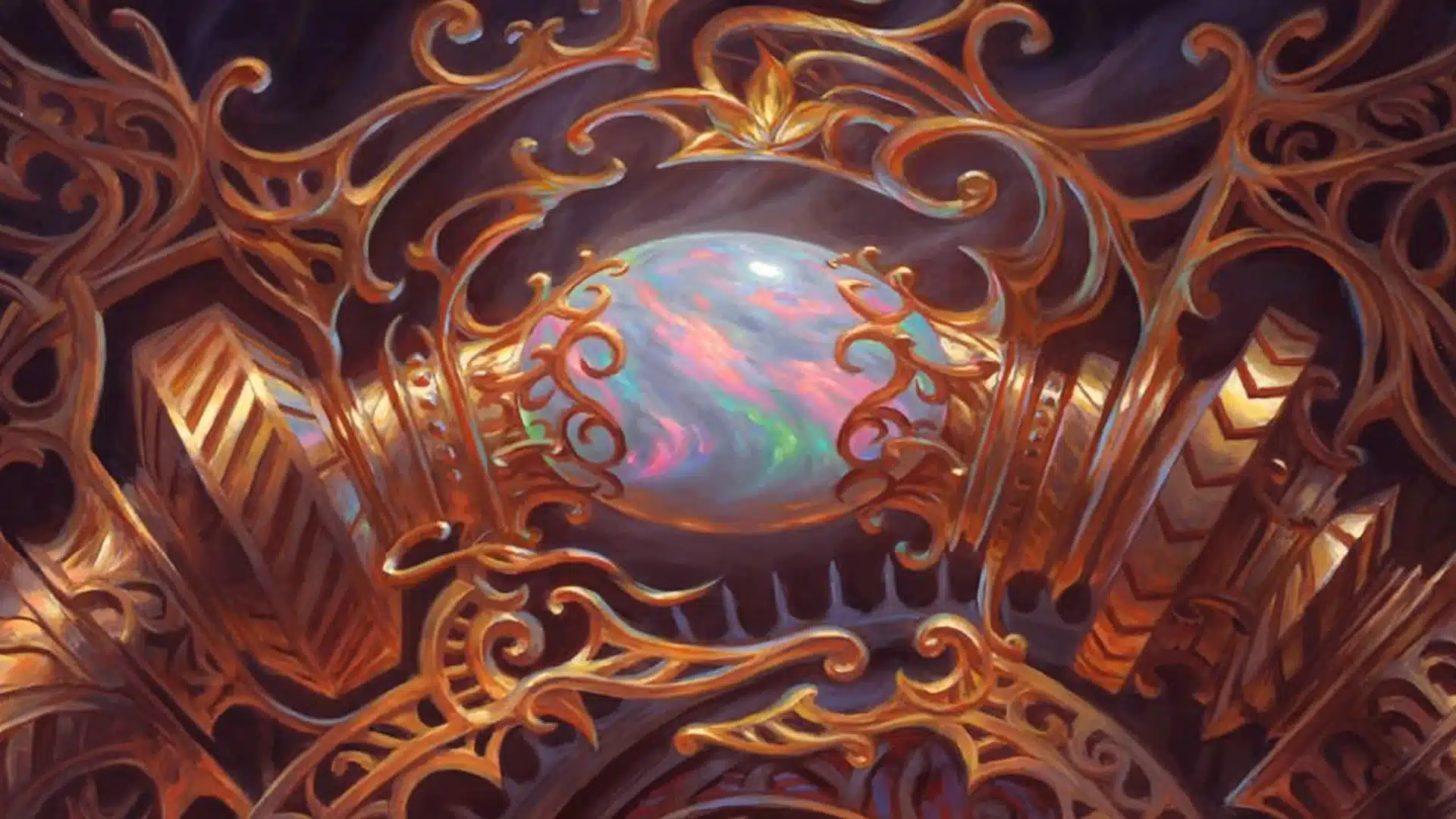Magic: The Gathering’s spoiler season is infamous for being never-ending. Even when main sets aren’t being spoiled for upcoming releases, smaller releases usually fill out even the quietest of periods. We’ve even had a few massive spoiler announcements come out of nowhere this week. 100 new Avatar cards appeared out of the blue, and now, a whole bunch of new MTG Arena reprints are releasing soon.
51 new cards are coming to MTG Arena via two new Anthologies on August 19th, just one day after being revealed. There are some incredibly strong cards coming to Arena. One of which is so strong that it received a day-zero ban in Historic.
Mox Opal Banned in Historic

Not only is Mox Opal finally available on MTG Arena, but it is going to be pre-banned in Historic. This artifact was unbanned in Modern last year, where it completely changed the format. The card did demand some format-wide adjustments, as it initially made Underworld Breach a bannable offense, but it now brings a lot of variety to Modern.
The decision to pre-ban Mox Opal is a good one. Not only is Underworld Breach still legal in Historic, but Affinity is already considered a very competitive archetype in the format. Mox Opal would push Affinity’s power level to be almost directly in line with Modern, which is probably too much for the rest of the format to handle.
If you want to play Mox Opal in Historic, you can technically still do that, but there’s a big condition applied. You will need to conjure the card with Quicksilver Lapidary. This card is decidedly bad and has seen no play at all up to now.
Since Mox Opal is banned in Historic, that means the only places this card will be legal are Timeless and Brawl, and Mox Opal is powerful enough to make an impact in either format. There are all kinds of powerful zero mana artifacts in Timeless like Chrome Mox and Mishra’s Bauble, allowing Mox Opal to create blisteringly fast starts.
While Mox Opal may not be legal in Historic, Affinity is still going to be getting a ton of power-ups in the upcoming Arena anthologies. In fact, one of the two new Anthologies is entirely dedicated to artifacts. Despite this, the most interesting and powerful artifacts aren’t found within this Anthology.
Artifact Lands Cycle Completed
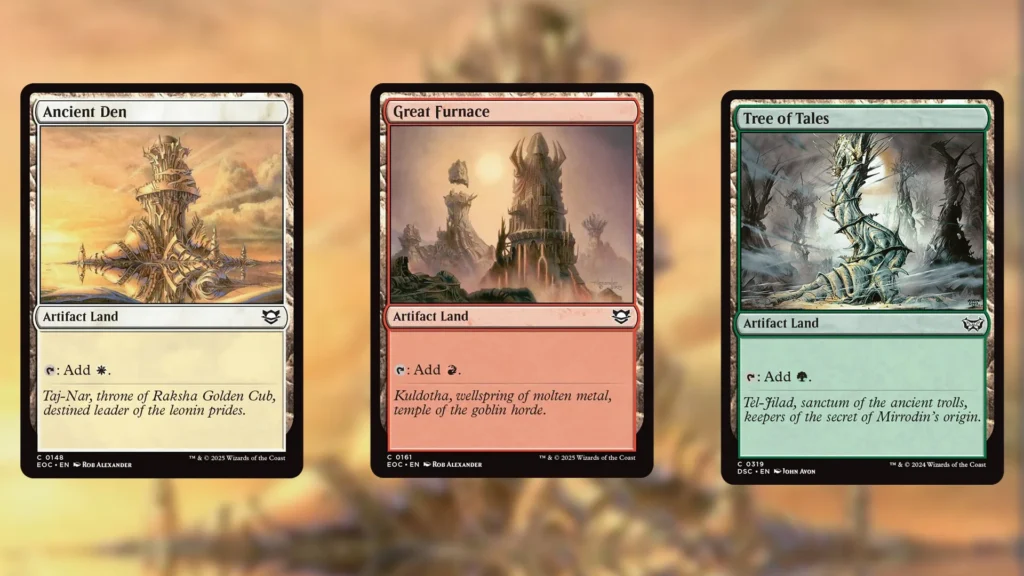
If you’re a Historic Affinity fan, these are undeniably the most relevant cards coming to MTG Arena. Seat of the Synod and Vault of Whispers, the two missing cards from this cycle, are already on MTG Arena thanks to Jumpstart. Now, the entire Artifact land cycle is complete, and it’s a big deal.
On top of making Timeless Affinity even better, Historic now has much stronger options for Affinity lists. Dimir Affinity has been a bit ahead of the rest thanks to the existing artifact lands, but Ancient Den and Great Furnace, in particular, could have big implications for Historic.
Both White and Red have incredibly strong options for Historic Affinity. Red introduces Pinnacle Emmissary, which had a big hand in reviving Affinity in Modern, and Cori-Steel Cutter, which appears in some midrange Modern Affinity lists as a persistent threat generator. Azorius is traditionally the best colors for Affinity, unlocking options like Esper Sentinel, Portable Hole, Dispatch, and Voyage Home.
These cards, alone, should allow Affinity to see a significant power boost in Historic, but there are a ton of artifacts coming in these two MTG Arena Anthologies that we haven’t talked about yet.
Currency Converter
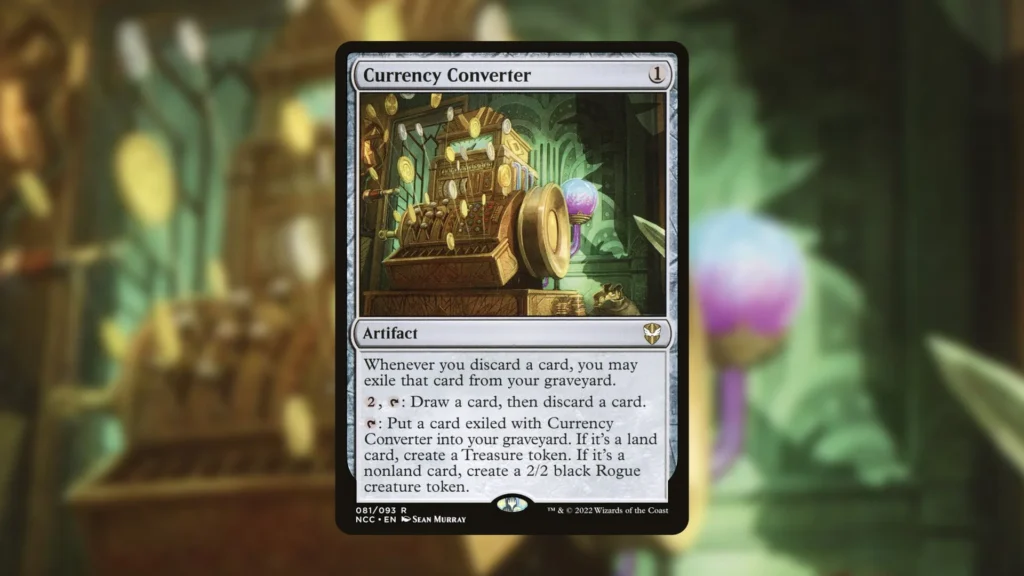
Originally a Commander exclusive card printed in Streets of New Capenna, Currency Converter sees a healthy amount of Duel Commander play and some occasional play in cEDH, Highlander, and Legacy. This suggests that Currency Converter could have some potential in MTG Arena, as well.
This card works best in decks that discard a lot of cards. Psychic Frog certainly comes to mind as a popular option across Historic and Timeless. The card usually appears in tandem with Diviner of Fates, another card that cares a lot about discarding, suggesting that Currency Converter might have a place in Historic.
Even if you don’t have a ton of discard synergies, Currency Converter can create value on its own. Looting is expensive for two mana, but the Converter can create additional benefits turn after turn. Currency Converter could be an interesting one-of in control strategies, but could also easily appear in decks that can use its second ability often, or as a one-of in Affinity lists. Tezzeret, Cruel Captain can notably tutor for this, which could make it a strong option to combat slower strategies.
Triplicate Titan
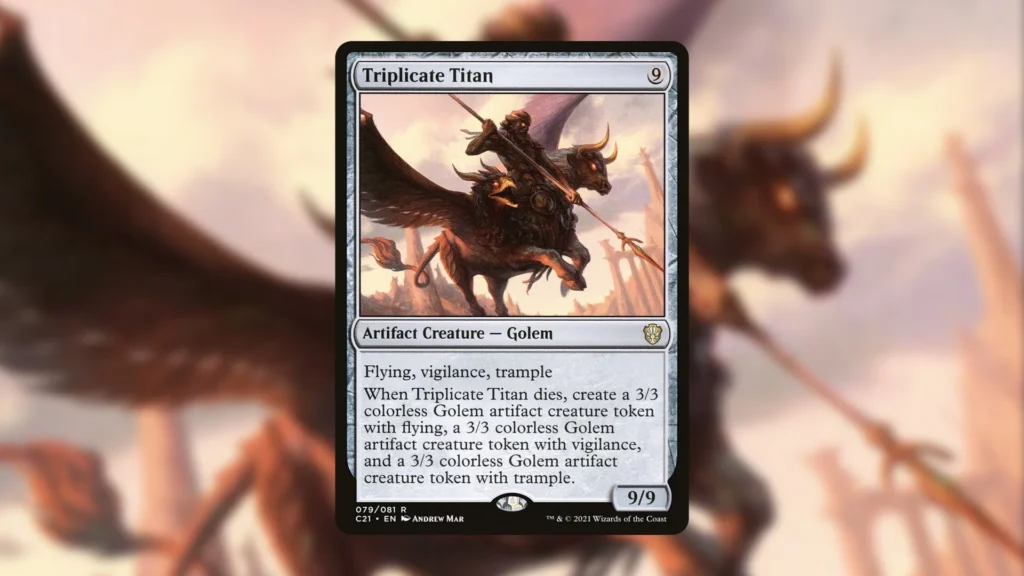
Trash for Treasure fans have another extremely powerful artifact creature to try and resurrect. Triplicate Titan is commonly seen in Vintage Cube as a payoff for both reanimate and artifact strategies, and it’s going to do the exact same thing in Historic and Timeless. This gives a new target for Emperor of Bones to resurrect, and can even come back to play with Life/Death, another card coming in these new MTG Arena Anthologies.
This works with all kinds of existing Historic strategies, but in a lot of cases, there are going to be better options available than Triplicate Titan. Ulamog, the Defiler, for example, is a better reanimation target, but it doesn’t work with Persist, as well as a few other options that are unique to Triplicate Titan.
This might not impact Historic too much, but there is certainly room for players to tinker with it.
A Ton of Rocks and Swords
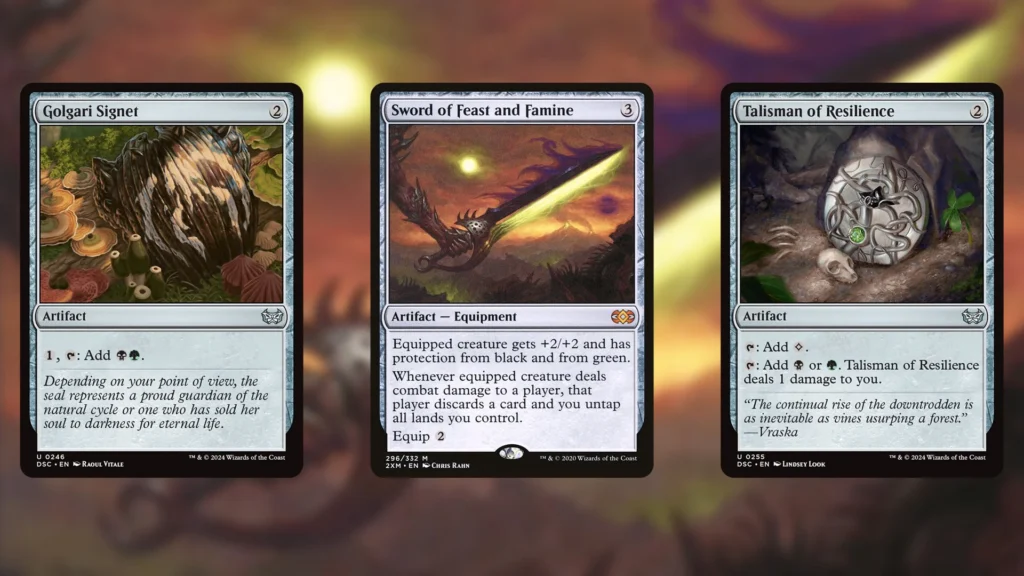
Overall, Arena Anthology 2 is far more exciting than Arena Anthology 1. Despite this, most of the new cards coming to MTG Arena are actually in the first Anthology, but many of the cards coming in this package are more exciting for Brawl than competitive formats.
All ten of the Signets and Talismans will be coming in the first Arena Anthology. These are occasionally seen in constructed ramp decks, but they are incredibly common in Commander. Mana rocks at two mana see a lot of play thanks to how long games go in that format, and will likely impact Brawl significantly, thanks to their popularity. We don’t expect these to impact Timeless whatsoever, but they could have a smaller impact in Historic.
The collection of Equipment coming in the First Anthology is likely to be the same. Sword of Feast and Famine, for example, is an incredibly powerful artifact that sees tons of Commander play. Untapping all of your lands on damage is a fantastic way to get ahead in a format all about exponential value. In competitive play, however, it’s very difficult to have the time to pull off the equip cost of this card on top of resolving it.
So, the first Anthology appears to be more for Brawl enthusiasts, while the second one has the powerful, heavy hitters that will affect constructed formats. In fact, there’s a ton of disgustingly powerful Planeswalkers, and even a Reserved List card, that will be coming to MTG Arena in the Second Anthology. There are tons of exciting things to look forward to in MTG Arena.
Stay with us at mtgrocks.com: the best place for Magic: The Gathering coverage!
